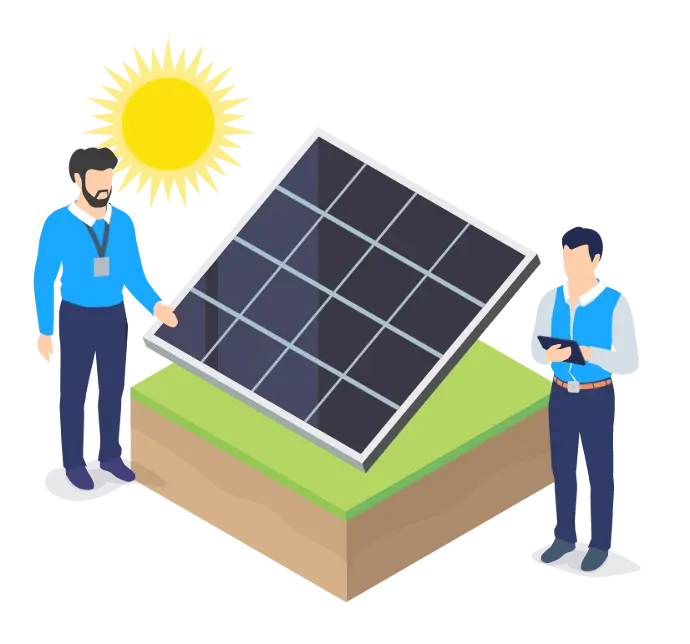
Solar Guide
Everything you need to know about going solar.
Benefits of solar
There are many great reasons to go solar. We’ve compiled everything you need to know about solar to get across solar and get a system on your premises.
- Immediate Reduction On Your Electricity Bill
- Reduce Your Environmental Footprint
- Hedge Against Future Electricity Price Rises
- Cool The Building Down With Shading On The Roof
- Boost Your Property Value
Solar systems produce electricity throughout the day, offsetting your peak electricity load from the grid. This is what lowers your electricity cost.
In Papua New Guinea, the bulk of energy generation consists of coal generators. Installing solar reduces the electricty demand of the power network and this reduces the amount of coal burned, reducing your environmental footprint.
A solar system legalises the cost of your electricity. This means that any future increase in electricity rates, increases the financial return of your solar system.
Solar panels reflect light off your roof and this reflectivity can reduce the amount of heat absorbed by the roof space. Which can reduce air conditioner demand and keep you cool.
Purchasing a solar system outright may boost the value of a property.
How does solar work?
- Generation
- Conversion
- Battery Storage
- Metering
- Grid Export
Solar panels capture sunlight and convert it into Direct Current (DC).
The Inverter transforms Direct Current (DC) generated from the panels into Alternating Current (AC). AC is the power you use in your home. Any excess electricity generated is fed into the grid or into a battery.
Any excess electricity that your solar system generates can be stored for use when the sun isn’t shining.
Utility meter measures the amount of energy drawn from the grid & the amount of energy fed into the grid.
The electricity grid receives any excess electricity generated from your solar system. This appears as a credit on your next energy bill
Solar system components
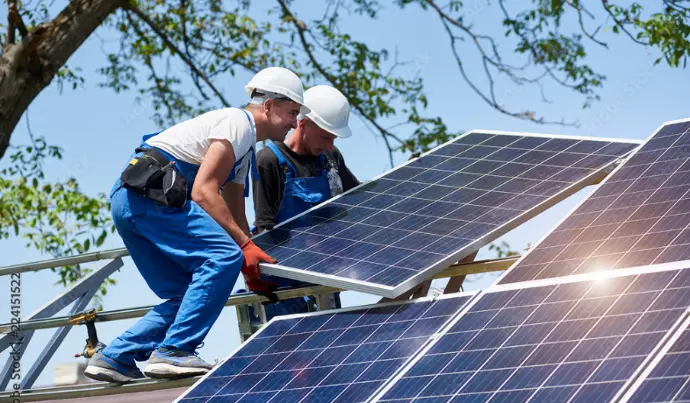
Solar panels
Solar panels capture sunlight Solar panel arrays are the most expensive part of the system. Often making up around 55% of the total system price. They are also the most robust component with many reputable manufacturers offering 10yr replacement warranties and the panels lasting long after that, and convert it into Direct Current (DC).
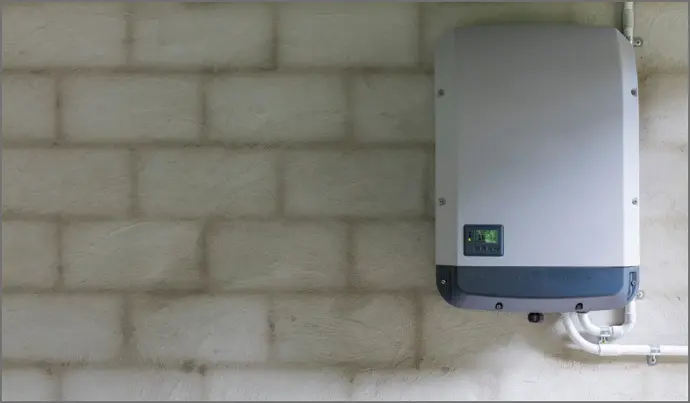
Inverters
The inverter is the second most expensive part of the system. It often makes up 30% of the system price. It normally has a warrantable life of 10yrs. It must be placed away from direct sunlight to maximise its life.
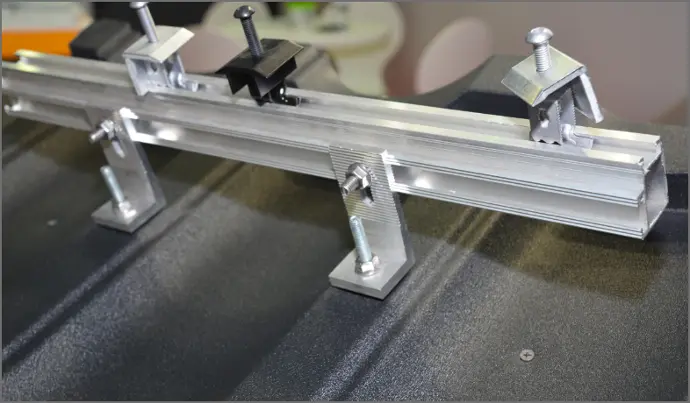
Mounting
Solar panels are mounted onto rails and these rails are fixed onto the roof with brackets. These brackets are screwed into the roof using the roof’s existing rivets so that no new holes are created on the roof. The mounting kits change depending on whether the roof is tin or tile. Other mounting options are available on request.
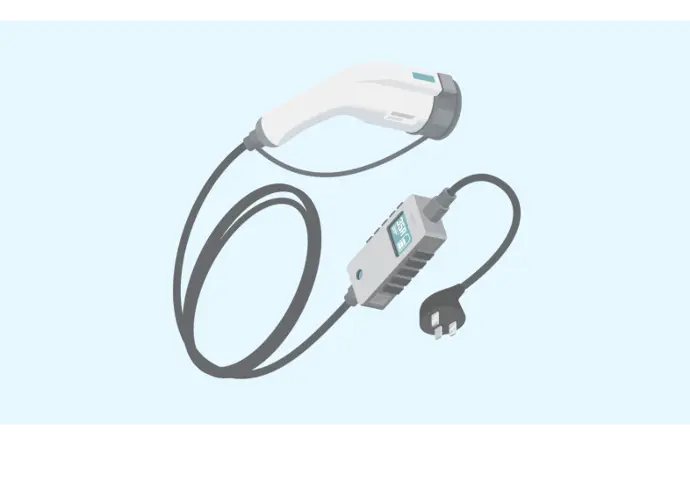
Cabling
The solar panels are connected into a series. DC cables are then run from the panels to the inverters. AC cables are then run from the switchboard to the meter. The longer the run to the meter, the more expensive this becomes. Cable trays can be included with your installation upon request.
The ideal roof
Space
Roof size affects the amount of panels that can be installed on the roof. With limited roof space, to reach certain sizes, higher efficiency (and more expensive) panels may need to be installed.
Strength
The roof must be able to hold the load of the panels. At ~20kg a panel, it cannot be placed on pergolas or patios.
Orientation
In the southern hemisphere, roof aspects facing north get the most sunlight and efficiency. Roof aspects facing east, get sunlight earlier in the day (later if west facing) with a little performance drop.
Ownership
Long leases or complete ownership of the building makes a solar system investment most attractive. However, Power Purchasing Agreements are available to mitigate the owner cost/leasee benefit.
Shade Free Roof
Without optimisers, any shadows from trees will destroy the generation of an entire string of panels. Therefore, the solar panels will only be placed on parts of the roof where there is no shading at anytime of the day.
Tight Rivets
The tightness of the existing rivets determine how closely the rows ofsolar panels can be fit together - this is because we do not drill anynew holes into the roof during installation. We use the existing rivets.
Asbestos Free
As a matter of health and safety, our electricians will not install on roofs with asbestos roof tiles.
Is solar right for your business?
To answer these questions, here are some of the questions we work through to design your solar system and see if it’s right for you.
- How much electricity do you use?
- What are the patterns of your energy usage?
- How much are you paying per kWh?
- Is your meter capable?
- Is your roof suitable?
Connection process
- Collect Data
- Preliminary System Design
- Site Visit
- Final Proposal & Contract
- Installation
- STC Creation & Documentation
- Ongoing Care
Firstly, we collect your bill and make an application for your meter data.
We design your solar system according to your usage and property.
We apply for the solar system design to be connected to the grid. The network then informs us how much electricity you are allowed to export. These applications can take up to 65 Business Days (13 Weeks)
We inspect the site’s electrical infrastructure network to assess if any upgrades are needed and finalise the cost quote.
We present the final proposal and contract for signing with installation dates.
After the system is connected to the grid, we send you a form confirming installation to issue the Renewable Energy Certificates. Northeast Generator & Solar Solutions provides you with all the warranty and system documentation you need.
Under a PPA payment plan, NGSS will look after the maintanence of the system. After the PPA comes to a close, the solar system may need an occasional wipe. We recommend inspecting the isolators bi-annually. More on maintenance here.